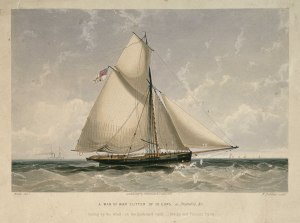
HMS Beagle was a Cherokee-class 10-gun brig-sloop of the Royal Navy, one of more than 100 ships of this class. The vessel, constructed at a cost of £7,803, was launched on 11 May 1820 from the Woolwich Dockyard on the River Thames. Later reports say the ship took part in celebrations of the coronation of King George IV of the United Kingdom, passing under the old London Bridge, and was the first rigged man-of-war afloat upriver of the bridge. There was no immediate need for Beagle, so she "lay in ordinary", moored afloat but without masts or rigging. She was then adapted as a survey barque and took part in three survey expeditions.

HMAS Psyche was a Pelorus-class protected cruiser built for the Royal Navy at the end of the 19th century. Initially operating on the North America and West Indies Station, the cruiser was transferred to the Australian Squadron in 1903, and remained there until the Royal Australian Navy (RAN) took over responsibility in 1913. After a stint in New Zealand waters and involvement in the Occupation of German Samoa, Psyche was paid off in 1915.

Captain Owen Stanley FRS RN was a British Royal Navy officer and surveyor.
Captain Charles Bampfield Yule, R.N. was an explorer and author of the Admiralty Australia Directory.

HMS Hydra was the lead ship of her class of wooden steam paddle sloops of the British Royal Navy, launched in 1838 at Chatham Dockyard. After taking part in operations during the Syrian War in 1840, she then served on anti-slavery operations and also as a survey vessel. She was scrapped in 1870.
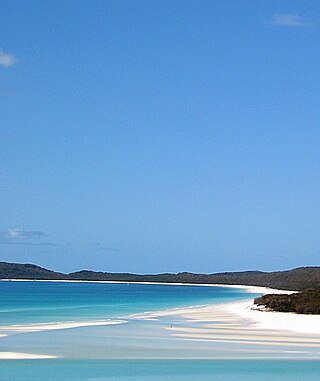
Francis Price Blackwood was a British naval officer who while posted at several different locations during his time in the Royal Navy, spent much of his time posted in colonial Australia and was an instrumental pioneer of regions near Australia's east coast and nearby islands.
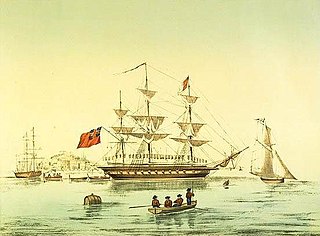
HMS Fly was an 18-gun sloop of the Royal Navy. She was responsible for the exploration and charting of much of Australia's north-east coast and nearby islands. She was converted to a coal hulk in 1855 and broken up in 1903.

HMCSProtector was a large flat-iron gunboat commissioned and purchased by the South Australian government in 1884, for the purpose of defending the local coastline against possible attacks in the aftermath of the 'Russian scare', of the 1870s. She arrived in Adelaide in September 1884 and served in the Boxer Rebellion, World War I and World War II.

The Cruizer class was a class of six 17-gun wooden screw sloops built for the Royal Navy between 1852 and 1856.
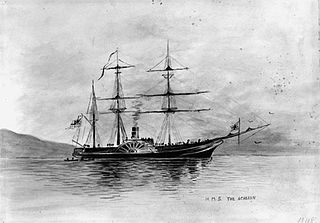
HMS Acheron was the last Hermes-class wooden paddle sloop ordered for the Royal Navy. She was launched at Sheerness in 1838. She spent two commissions in the Mediterranean before being reclassed as a survey ship in 1847. Between 1848 and 1851 she made a coastal survey of New Zealand, the first such survey since Captain Cook. She was paid off at Sydney and was tender to HMS Calliope. She was sold at Sydney in 1855.

HMS Sealark was a Royal Navy vessel used primarily for hydrographic survey work. She was originally a luxurious private auxiliary steam yacht for a number of wealthy owners and in 1903 was acquired by the Royal Navy, serving until 1914. She was sold to James Patrick Steamships Ltd and converted to a merchant ship for the Australian coast and finally hulked in 1924.
HMS Elk was a 482-ton displacement, 16-gun Acorn-class brig-sloop of the Royal Navy launched on 29 September 1847 from the Chatham Dockyard.

HMS Eclipse was a four-gun Cormorant-class first-class gunvessel launched in 1860 from the shipyard of J. Scott Russell & Co., Millwall. She served on the Australia Station, took part in the Second Taranaki War, including contributing men to a naval brigade which attacked the Maori stronghold at Gate Pā. The entire class were never satisfactory as gunvessels, partly due to their excessive draught, and Eclipse was broken up at Sheerness in 1867, only seven years after her launch.

HMS Hecate was a 4-gun Hydra-class paddle sloop launched on 30 March 1839 from the Chatham Dockyard.
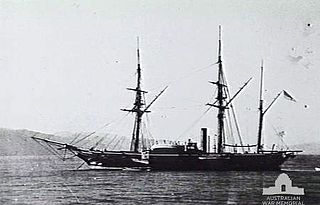
HMS Virago was a Royal Navy Driver-class wooden paddle sloop launched on 25 July 1842 from Chatham Dockyard.

HMS Dart was a schooner of the Royal Navy, built by the Barrow Shipbuilding Company, Barrow and launched in 1877 as Cruiser for Lord Eglinton. She was subsequently purchased by the Colonial Office for the use of Sir Arthur Hamilton Gordon as governor of the Fiji Islands. On his appointment to New Zealand, Cruiser was purchased by the Royal Navy as a tender for the training ship Britannia and the name changed to Dart in March 1882.

HMS Herald was an Atholl-class 28-gun sixth-rate corvette of the Royal Navy. She was launched in 1822 as HMS Termagant, commissioned in 1824 as HMS Herald and converted to a survey ship in 1845. After serving as a chapel ship from 1861, she was sold for breaking in 1862.
Francis was a 41 tons (bm) colonial schooner that was partially constructed at the Deptford Dockyard, England, and sent in frame aboard the Pitt to Australia to be put together for the purposes of exploration. The vessel had originally been designed for George Vancouver’s discovery voyage of the west coast of North America.
Sir William Alexander George Young, , was a British colonial administrator who acted in an interim capacity as Governor of Jamaica in 1874, and later served as Governor of Gold Coast from 1884 to his death in 1885. His father may have been an RN paymaster as well: a paymaster of that name was on board HMS Gorgon when she ran aground on the River Plate in May 1844 and was refloated in November that year.

Bramble Haven is an atoll in the Louisiade Archipelago. Its islands on the northern section are grouped as the Duperre Islands.
